Thanks Pauline, Large Heath are quite variable in the size and shape of the spots. I've been wondering how to ask Jane about taking a lady I know from the internet


probably best not to if I want to continue these trips

Thanks Trevor, fortunately in that part of the country a bit of planning and some luck with the weather can get you all three on the same day fairly easily.
Hi Goldie, we did visit Foulshaw Moss on the Tuesday, your'e right, Jane liked it there...see below.
Cheers Wurzel, you really must make the trip sometime, beautiful scenery and it always feels as if I am stepping back in time when I visit that area.
Thanks David , that female did stand out a bit with those large hindwing spots.
A few day up north – part 4.
Over the past few years it seems that increasing numbers of birders are turning to butterflies and dragonflies during the summer months. My first interest is in butterflies and moths and I am not really a birder but when the weather is not conducive for butterflying I sometimes do the opposite and look at birds, especially on our trips when we are in areas where we may see something that we would not see at home.
Foulshaw Moss.
With the weather turning dull and cloudy on the Tuesday (11th June) we decided have a look at Foulshaw Moss, a Cumbria Wildlife Trust site which is well known for a pair of Ospreys that return each year to breed. Despite coming to this part of the world for some years now we had not actually visited here before although we had driven past a number of times and seen it signposted. We arrived just after 09.30am and after parking up had a chat with the ranger in his hut by the start of the path. We then went down a short way to the first hide which overlooks a row of feeders set up in a small clearing. These were being visited by lots of small birds including Goldfinches, Chaffinches, Siskins and Redpolls, the last one being a bird I never see back home.
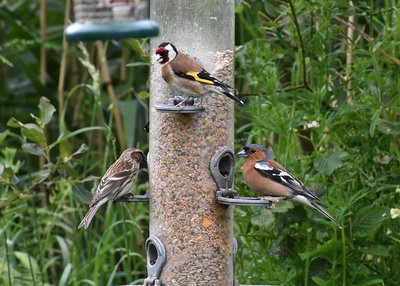
- Goldfinch, Chaffinch & Redpoll - Foulshaw Moss 11.06.2019
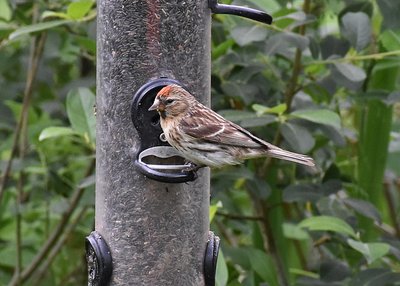
- Redpoll - Foulshaw Moss 11.06.2019
There was also a Great-spotted Woodpecker that kept returning to these feeders.
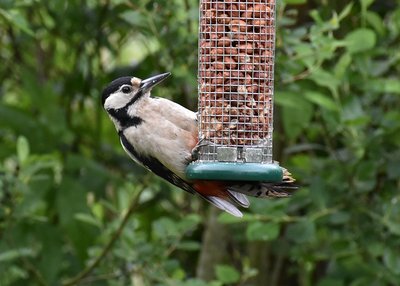
- Great Spotted Woodpecker - Foulshaw Moss 11.06.2019
We than carried on along the board walk to the Osprey hide from where the nest can be seen in the top of a tree in the distance. A couple of cameras have been set up in this tree which provide a live feed from the Osprey nest that can be viewed on the reserve’s website. There was also a spotting scope in the hide for use by visitors to get a closer look of the nest.
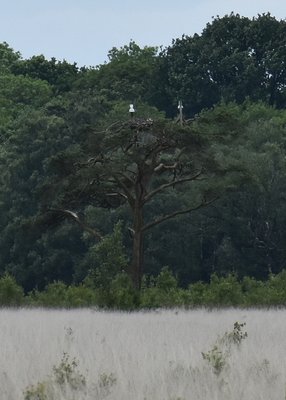
- Osprey nest in the distance, you can just make out the female hunkered down from the wind in the middle of the nest. The white objects to the sides of the nest are the cameras.
A few minutes after we arrived at the hide a volunteer arrived and set up another spotting scope and a tablet displaying the live feed from the cameras which showed the female hunkered down in the wind sheltering two chicks.
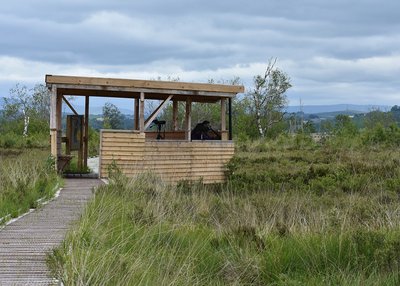
- Osprey hide at Foulshaw Moss
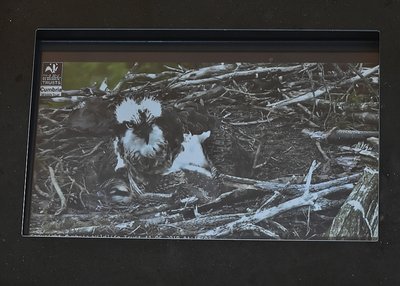
- Tablet screen showing live feed from the cameras.
After spending a little while in the hide and chatting to the volunteer about the Ospreys we then continued around the board walk which circles back around to the beginning of the path. Jane was keen to look in the first hide again and watch the birds on the feeders so we popped back there for a bit and then had another wander along the board walk noticing some Reed Buntings and lots of Common Heath Moths which seem to fly in any conditions.
We spent a couple of hours at Foulshaw and although the weather was dull and cloudy with a cold wind blowing across the open moss, we both thought that it was a great reserve and well worth a return visit when we are next in the area. As well as the Ospreys and other birds, Large Heath can be seen on the moss and I believe that White-faced Darters can also be found here, although the cool and cloudy weather meant that neither of these were seen today.
RSPB Leighton Moss.
After leaving Foulshaw Moss we drove back around into Silverdale and went to RSPB Leighton Moss which is just a few minutes from our B&B. Anyone who has been reading my PD for some time will have seen that we often visit this reserve when we stay in this area as it has good paths between most of the hides which Jane can manage with her limited mobility. We usually come to see the Marsh Harriers which breed here every year and this year we were told they are doing well with four nests scattered about the various reed beds. We certainly saw more Marsh Harrier activity than we have seen before with good views from all the hides we visited during the afternoon. Although we had good views through binoculars, these sightings were too far away for either my Panasonic FZ200 or Nikon D3400 (with 70-300mm lens) to get any good shots although I managed a few record shots with the D3400 which I have cropped quite a lot to post below.
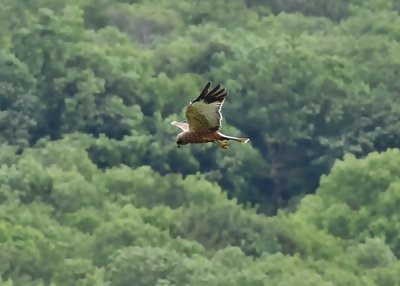
- Marsh Harrier - Leighton Moss 11.06.2019
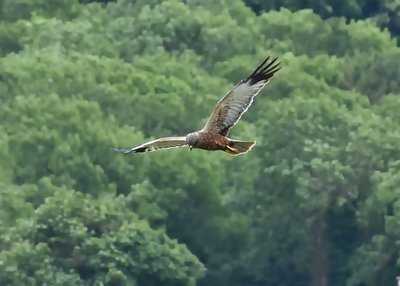
- Marsh Harrier - Leighton Moss 11.06.2019
We also drove around to the Allen and Eric Morecambe hides down by the shoreline where we saw various waders including nesting Avocets along with a large number of Black-headed Gulls which were making quite a racket.
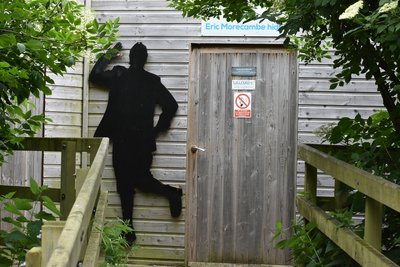
- No words needed.
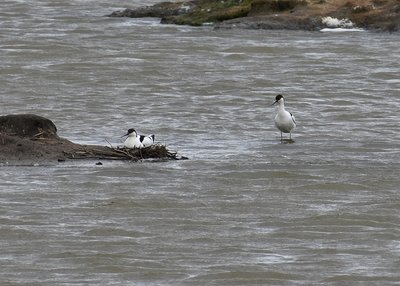
- Avocets - Leighton Moss 11.06.2019
By about 4.00pm Jane wanted to return to our B&B and have a shower and a rest before going out for a meal on the night so I dropped her off and returned to Leighton. There is one hide that we have never been to before (the Lower hide) as it involves a longer walk and Jane wasn’t sure if she could manage it. With another dull day forecast for Wednesday we had decided that I would go back and do a recce to see if I thought that Jane could manage it with a view to perhaps giving it a go the next morning.
On the walk to the hide a young Red Deer ran across the path in front of me and went down in the grass where I managed to sneak up and get a shot of him watching me from his hiding place.
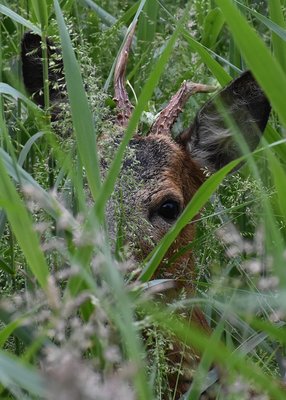
- Someones got their eye on me.
One of the star attractions currently at Leighton Moss is a female Bittern that is nesting not far from the Lower Hide and which had been seen most days taking flights across the reed beds. I had not long arrived at the hide when someone called out ‘Bittern’ and I turned in time to see it flying off across the reeds and just about got a couple of blurry record shots as it disappeared into the distance. Like the Marsh Harriers, the shot below is heavily cropped.
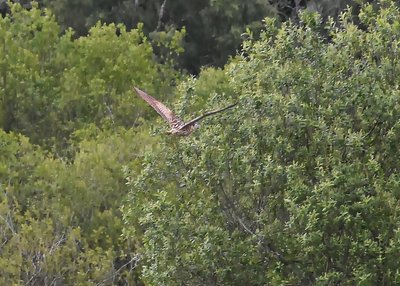
- Bittern - Leighton Moss 11.06.2019
One of the other occupants of the hide mentioned to me that he had been there three hours and that was his first glimpse of the Bittern…and he nearly missed it, looking in the wrong direction at first when it was called out.
There were a number of Lapwings to be seen around the hide including a female on a nest amongst a pile of cut reeds right in front of the hide and who must be the most photographed Lapwing in the UK. Occasionally a couple of chicks would come out and have a little wander around before hiding back in the nest.
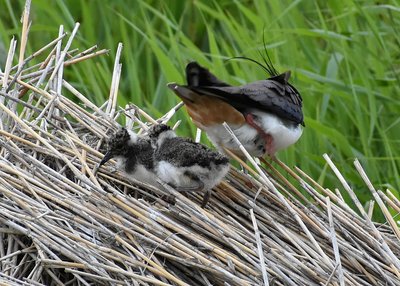
- Lapwing and chicks - Leighton Moss 11.06.2019
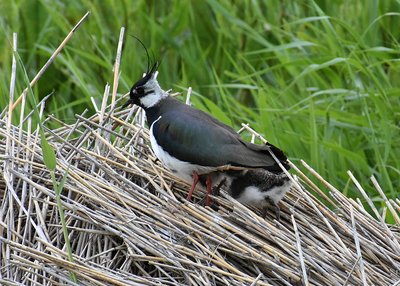
- Lapwing and chicks - Leighton Moss 11.06.2019
After some heavy rain on Tuesday night, Wednesday morning started off very similar to the previous day i.e. cool and cloudy so we returned as planned to Leighton Moss and walked down to the Lower hide, Jane finding it not too bad as long as we took our time. We spent most of the morning in this hide and got more good views of the Marsh Harriers.
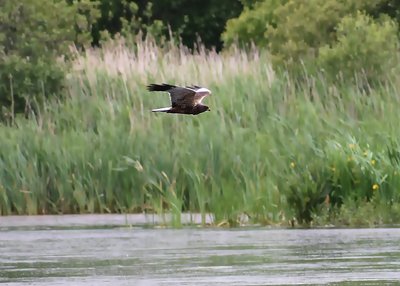
- Marsh Harrier arriving at speed from stage left...
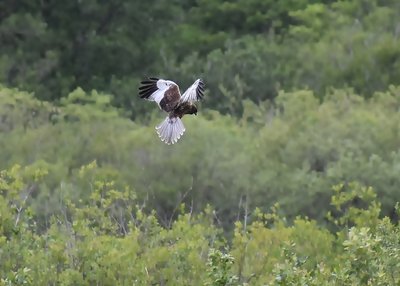
- ...and pulling up at the end of his run.
Unfortunately the Bittern didn’t show whilst we were there this time but there was plenty of interest to see including the aforementioned Marsh Harriers and Lapwings plus Great-crested Grebe, Reed Warblers and a Kingfisher, most of which were too far away or too quick for photos.
Around mid-day we left the hide and wandered back towards the car, hearing a rather vocal Pheasant along the way which we shortly came across striking a pose in the middle of the path. He seemed quite tame and is probably used to seeing visitors here, in fact we have seen Pheasants around the other paths here on previous visits.
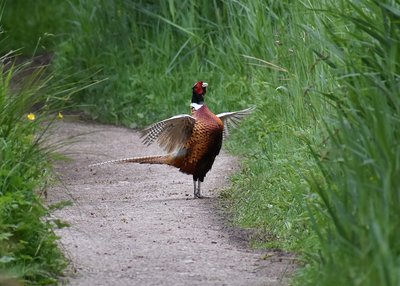
- Pheasant making himself look all important.
We then went into Arnside where we had a cream tea before popping up the knott for a quick look around. It was very dull and gloomy by now under a thick grey overcast so I wasn’t expecting to find much but I did a quick circle around some of the paths looking for roosting butterflies without success. I did find my only Lepidoptera of the day when I disturbed a Cinnabar Moth which flew a short distance and settled again.
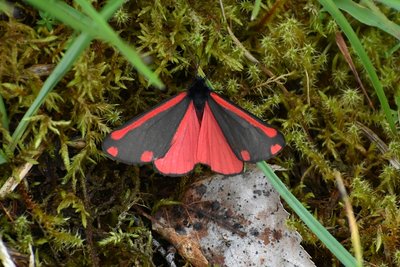
- Cinnabar Moth - Arnside Knott 12.06.2019
I also saw a young Red Deer which looked like it couldn’t decide whether to run for it or not.
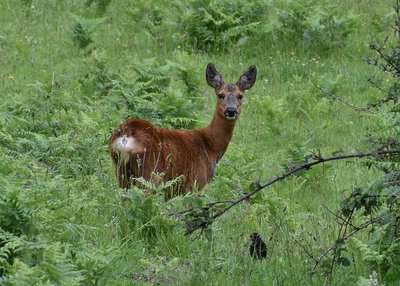
- Shall I stay or shall I go.
We left Arnside and with the weather now beginning to turn drizzly we went back to Leighton Moss to finish off the day.
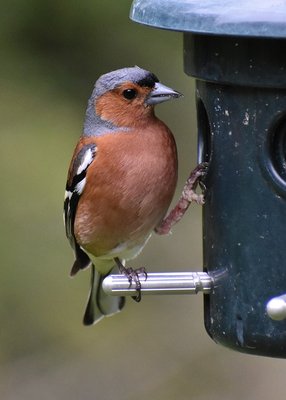
- Chaffinch on feeder behind the visitor center - Leighton Moss 12.06.2019
The rain turned heavier again on Wednesday night and continued into Thursday morning when we checked out of our B&B. If the weather had been better I had considered taking a diversion on the way home to Prees Heath to see if Silver-studded Blues were out there yet but with dull skies and rain most the way back down the M6 I decided against it.
Still, it was a cracking few days in one of my favourite parts of the country

Bye for now,
Neil.

